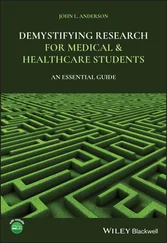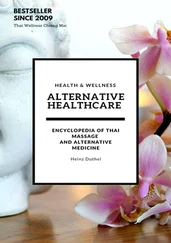What professional issues does this raise? Using the Person‐centred Practice Framework, what components of the practice environment domain are relevant in this episode of care?
In your discussion, you may have considered professional issues such as competency, accountability and preserving safety. In relation to the care environment domain of the Person‐centred Practice Framework, you might have considered appropriate skill mix, shared decision making, power sharing and effective staff relationships. You may have questioned why John did not feel able to ask for help; is this based on his previous experience or current levels of support? Additionally, you may have questioned why John was left alone and why he was prepared to engage in care activities beyond his scope of competency. Consider the potential trauma for Mr Gregor if he had slipped. For John there could also be consequences, both in terms of accountability for his actions and the risk of injury as a result of inappropriate moving and handling. The appropriate professional response would be to prioritise the interests of the client and to seek help. This experience could be used as an opportunity for reflection between John and his practice supervisor, to explore their values and competencies and the culture of the care environment. A possible outcome could be that John attends a moving and handling update, demonstrates safe client transfers and has the confidence to seek help and challenge unsafe practice.
Person‐centredness, professionalism and organisational structures
Key learning from a range of international inquiries into high‐profile failures in health and social care practices has highlighted the importance of organisational structures and cultures in achieving safe and effective, person‐centred practice (Sinclair 2000; Douglas et al. 2001; Francis 2013; Gosport Independent Panel 2018). Recurring issues from such inquiries include failure to raise and challenge concerns, poor performance management, ineffective leadership and inadequate clinical governance systems (Walshe and Shortell 2004). It is therefore essential for healthcare professionals to be vigilant to issues in their own practice, and that of others, which are inconsistent with person‐centred values. These may include issues that are explicitly unacceptable. It may, however, include more subtle instances that nonetheless lead you to feel uncomfortable when you believe personhood and dignity have not been respected. The following vignette offers an example of this.
A clinical manager attends a multidisciplinary bed management meeting in a large NHS teaching hospital. The senior bed manager tells staff that there are 23 patients in the emergency department and only 18 planned discharges. Added to this, there are staff shortages on this shift with an additional five staff needed to meet safe staffing levels across the hospital. The bed manager indicates that to increase flow, more patients need to be sent home. One manager reports that:
‘The patient in room 33 will die soon which will free up a bed and we could send another home after 8pm in a taxi when her blood transfusion is finished.’ This person lives alone and has been in hospital for a week.
In this vignette, the culture of care appears to prioritise targets over people. This is demonstrated through the use of language that disrespects personhood and dignity. Decisions are being made that affect vulnerable persons, with no acknowledgement of risk management or collaborative working. There is limited opportunity for shared decision making or consideration of the policies and procedures that support safe and effective care delivery. Finally, you may question the manager's position as a leader and role model and the failure of those present to challenge these practices which are at odds with person‐centredness.
Such experiences within the practice setting can result in a level of moral distress. This is defined as: ‘The painful psychological disequilibrium that results from recognising the ethically appropriate action, yet not taking it. Because of obstacles such as lack of time, supervisory reluctance, an inhibiting medical power structure, institution policy or legal considerations’ (Corley 2002, p. 250). For more information on moral distress please see: https://journals.sagepub.com/doi/10.1191/0969733002ne557oa.
Creating person‐centred cultures
The Person‐centred Practice Framework provides a useful lens for professionals to view, guide and enhance practice. In the previous sections, we discussed prerequisites such as professional competence and developed interpersonal skills. We have also highlighted some of the care processes essential for person‐centred practice, such as working with a person's beliefs and values and sharing decision making. The practice environment, such as a ward, community hub, care home or health centre, and the wider organisational structures and leadership that support these environments are also significant in enabling professionals to support human flourishing. In the next section we propose strategies to support professionals to challenge issues that are at odds with their person‐centred values and beliefs. These strategies include reflection, self‐care and constructive challenge.
Critical reflection is a useful tool for professional learning (Gardner 2014) and can help professionals to discuss, deconstruct and learn from clinical issues. Deep learning is enhanced by a supportive culture and skilled facilitation (Dewing 2008; Mann et al. 2009). Reflective learning can be viewed as occurring at micro, meso, and macro levels. In the above activity, at a micro level John and his supervisor may analyse his actions with Mr Gregor and explore why he felt unable to ask for help. These reflections could be recorded to support continuing professional development and lifelong learning. At the meso level, his supervisor may use this as an opportunity to reflect on expectations of students and the learning culture of the unit. At a macro level, audit results of the learning environment may reveal a high number of critical incidents focusing on safe moving and handling, suggesting that lessons can be learned from this reflection that lead to action at institutional level.
Reflection can also support the development of self‐knowledge and such insights might lead to the consideration of strategies to support a professional's own well‐being. Some aspects of professional practice, such as long working hours, stressful encounters and placing people's needs ahead of our own, are known to have a detrimental impact on well‐being (American Dental Association 2019; Winkel and Morgan 2019), and can result in moral distress and burnout (Hamric 2010). It is important for healthcare professionals to demonstrate self‐care and to build resilience to ensure that their fitness for professional practice is not compromised.
In the vignette above we highlighted that staff may experience moral distress regarding discussions about the safety and dignity of people being considered for discharge. Through reflection, practitioners may realise that this is embedded in practice. Challenging values and behaviours that appear to be prioritised within the organisation can create anxiety and contribute to diminished well‐being. Strategies that might support well‐being could include engaging in clinical supervision to discuss matters and explore how to act. Practice development initiatives, where participants are supported to role play a range of alternative actions in a safe space, may be another means of challenging negative cultures. Additionally, learning mindful practices may support well‐being and stress management and help achieve a work/life balance. This is discussed in greater detail in Chapter 15. By engaging in such activities, practitioners may feel empowered to constructively challenge the behaviours and values that were observed at the meeting or speak to another manager to report the concerns that were witnessed.
Читать дальше












